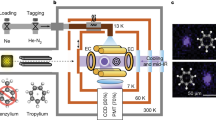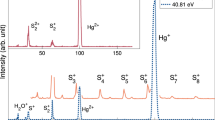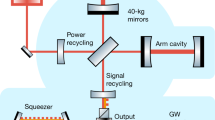Abstract
SINCE nay last letter on this subject1, I have designed and constructed my third mass-spectrograph which embodies second-order focusing. The dispersion, from 4 mm. to 6 mm. for one per cent difference of mass, was calibrated by means of the twin lines of bromine, which were found to have a difference of 1.9983 ± 0.0015 units. The D, H2 doublet can now be obtained perfectly resolved, and as the lines are not seriously curved it is not difficult to estimate their separation to 0.005 mm. so that an accuracy of 1 in 105 is theoretically possible. Unfortunately, the differences in mass deduced from individual doublets show variations greater than this. These appear to depend on the condition of the discharge and are probably due to the uneven illumination of the front slit causing lateral structure in the lines themselves, which may not be quite the same for particles so different as an atom and a molecule. It is hoped to get rid of this technical difficulty as the work proceeds.
This is a preview of subscription content, access via your institution
Access options
Subscribe to this journal
Receive 51 print issues and online access
$199.00 per year
only $3.90 per issue
Buy this article
- Purchase on Springer Link
- Instant access to full article PDF
Prices may be subject to local taxes which are calculated during checkout
Similar content being viewed by others
References
NATURE, 135, 541 (April 6, 1935).
Author information
Authors and Affiliations
Rights and permissions
About this article
Cite this article
ASTON, F. Masses of some Light Atoms measured by means of a New Mass-Spectrograph. Nature 137, 357–358 (1936). https://doi.org/10.1038/137357b0
Published:
Issue Date:
DOI: https://doi.org/10.1038/137357b0
This article is cited by
-
Restropic Activity of Blood
Nature (1938)
-
Isotopic Weight of 12C
Nature (1937)
-
�ber die massenspektrographische Messung von Kernbindungsenergien
Die Naturwissenschaften (1937)
-
Massenspektrographie und Kernbaufragen
Die Naturwissenschaften (1937)
-
Die Doubletts der C1-Gruppe und die Bindungsenergien der Kerne zwischen12C und16O
Die Naturwissenschaften (1937)
Comments
By submitting a comment you agree to abide by our Terms and Community Guidelines. If you find something abusive or that does not comply with our terms or guidelines please flag it as inappropriate.



